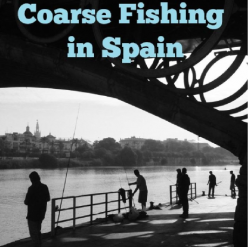How Hitler’s Mirror carp live on in Madrid’s rivers
The Nazi dictator gave General Franco four pairs of fish, whose descendants have helped replenish reservoirs in the Madrid region.
The story begins 60 years ago, while Europe burns during the Second World War, and post-civil war Madrid faces a tough road towards recovery.
Joaquín Miranda de Onis, professor at the School of Agriculture (Escuela de Ingenieros Agrónomos) is ordered to Madrid airport. There he must collect a package in person from a plane arriving from Berlin, from the Foreign Ministry of the Third Reich. It is a wet, brown fabric package concealing unusual contents: four pairs of Mirror carp, (Cyprinus carpis) a species rarely found in Spain at this time.
Back in July 1939, Hitler had received a triptych of the painter Ignacio Zuloaga, a gift from Franco. Through his Spanish ambassador, Hitler knew that the ‘generalísimo’ was a keen fisherman – Franco enjoyed his time spent fishing the river Mandeo in La Coruña, where he caught salmon up to nine kilos.
Arroyo Manuel Varela, then a student of Joaquín Miranda, recalls “when he collected the carp package, the fish surviving in a moistened envelope, he took them to the School of Agriculture.
Francisco Verdejo a caretaker at the time remembers being the last custodian of that gift from Hitler to Franco. “The carp were deposited in the Queens pond ‘estanque de la Reina’: located on the road that links the Royal Palace with El Pardo is a pool, which receives water from a covered well – forty meters long and more than twenty metres wide and up 4.30 meters deep, ”
Verdejo continues. “The mirror carp ate, got fat and grew, until one day in 1994 when the bed of the pond cracked; causing leaks and had to be drained.” Then, the four pairs of fish had multiplied so that between them and their descendants were counted up to 7,000 descendants,” he says. In small PVC tanks, those carp, including one of 24 kilos, almost a meter in length and at least six of 16 kilos each, were taken to a fish farm next to the Migas Calientes, municipal treatment plant located across the M-30 ring road. “I photographed the largest Mirro carp,” says Verdejo.
With these Mirror carp some of Madrid’s rivers and lakes, on whose banks fishermen compete every weekend, were repopulated. “However,” says Miguel Vicente Batalla, biologist, “the Mirror carp arrived at the farm but I think that a large proportion was forwarded to the School of Agriculture”. However, according to Francisco Verdejo, “once the estanque de la Reina was repaired, I personally ordered it repopulated, but with red carp – another species.”
Other witnesses point out that during the catastrophic flood caused by the river Manzanares overflowing in the early summer of 1994, the fish farm was destroyed and most of those Mirror carp were killed by the deluge. It’s now estimated that around 12,000 descendants of the four original Mirror carp in excess of 8 cm size inhabit the river alongside the capital’s nine bridges and in two water treatment plants.
Today Mirror carp are also called Raza de Galitzia. Perhaps a reference to their origin: a gift from the Reichsführer to his friend Francisco Franco ‘Generalísimo de los Ejércitos’ and head of the Spanish State.
For further advice visit: spainfishing.com
